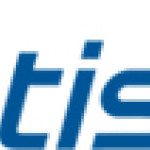- المجال: Telecommunications
- Number of terms: 29235
- Number of blossaries: 0
- Company Profile:
ATIS is the leading technical planning and standards development organization committed to the rapid development of global, market-driven standards for the information, entertainment and communications industry.
1. The set of procedures, methods, tools and standards used during system operation. See also: Development Environment. 2. The organizational measures, procedures and standards to be used whilst operating a Target of Evaluation.
Industry:Telecommunications
1. The set of procedures, methods, tools and standards used during system development. See also: Operational Environment. 2. The organizational measures, procedures and standards used whilst constructing a Target of Evaluation.
Industry:Telecommunications
1. The set of laws, rules and practices that regulate how sensitive information and other resources are managed, protected and distributed within a specific system. 2. . A statement by a System Manager/Project Manager defining a system, its Security Requirement, the security measures to be enforced and the allocation of responsibilities for enforcing them. . Note: When an SEISP is required it will conform with the policy set out in the relevant SSP. See also: Initial System Security policy.
Industry:Telecommunications
1. The served user's (or controller's) reference to a particular party within the context of a call. Note 1: Multiple parties may be associated with a given call, e.g., a conference call. Moreover, there may be multiple connections associated with a single party, e.g., a simultaneous voice and video call. Note 2: This service description assumes that there exists only one connection to a given party. 2. In a teleconference, any participant.
Industry:Telecommunications
1. The rights granted to a user to access, read, modify, insert, or delete certain data, or to execute certain programs. 2. Access privileges granted to a user, program, or process. 3. The granting of access to a security object. 4. The process by which an access control decision is made and enforced. 5. The granting of rights, which includes the granting of access based on access rights.
Industry:Telecommunications
1. The ratio of (a) total received power, i.e., the received signal-plus-noise-plus-distortion power to (b) the received noise-plus-distortion power. 2. The ratio of (a) the recovered audio power, i.e., the original modulating audio signal plus noise plus distortion powers from a modulated radio frequency carrier to (b) the residual audio power, i.e., noise-plus-distortion powers remaining after the original modulating audio signal is removed. Note: The SINAD is usually expressed in dB.
Industry:Telecommunications
1. The quality of an information system (IS) reflecting the logical correctness and reliability of the operating system; the logical completeness of the hardware and software implementing the protection mechanisms; and the consistency of the data structures and occurrence of the stored data. Note that, in a formal security mode, integrity is interpreted more narrowly to mean protection against unauthorized modification or destruction of information. 2. The prevention of the unauthorized creation, amendment or deletion of information. 3. A security property of an object that prevents or is used to prevent: - its condition of existence being changed and/or - its contents being changed. This property is relative to some subject population and to some agreed degree of security. 4. See Data Integrity. 5. The prevention of the unauthorized modification of information without detection. . 6. The property that the existence of an object and/or its contents not be destroyed or altered by an unauthorized user. Also, the property that the contents of an object not be altered to unauthorized values.
Industry:Telecommunications
1. The property that ensures that the actions of an individual or an institution may be traced uniquely to that individual or institution. 2. In information systems (IS,) the process of tracing IS activities to a responsible source. 3. In COMSEC, the principle that an individual is entrusted to safeguard and control equipment, keying material, and information and is answerable to proper authority for the loss or misuse of that equipment or information. 4. The property that ensures that the actions of an entity may be traced to that entity.
Industry:Telecommunications
1. The profile that includes the service profile and contains all the data associated with the user, e.g., incoming call handling information, selection of service provider/service area coverage, service subscriptions, service parameters, etc. 2. A description of a user, typically used for access control. Note: A user profile may include data such as user ID, user name, password, access rights, and other attributes. 3. A pattern of a user's activity that can be used to detect changes in the activity. 4. Patterns of a user's activity that can show changes from normal behavior.
Industry:Telecommunications
1. The process to determine that an information system (IS) protects data and maintains functionality as intended. 2. A process used to determine that the security features of a system are implemented as designed and that they are adequate for a proposed application environment. This process includes hands- on functional testing, penetration testing, and verification. See also: Functional Testing, Penetration Testing, and Verification.
Industry:Telecommunications
